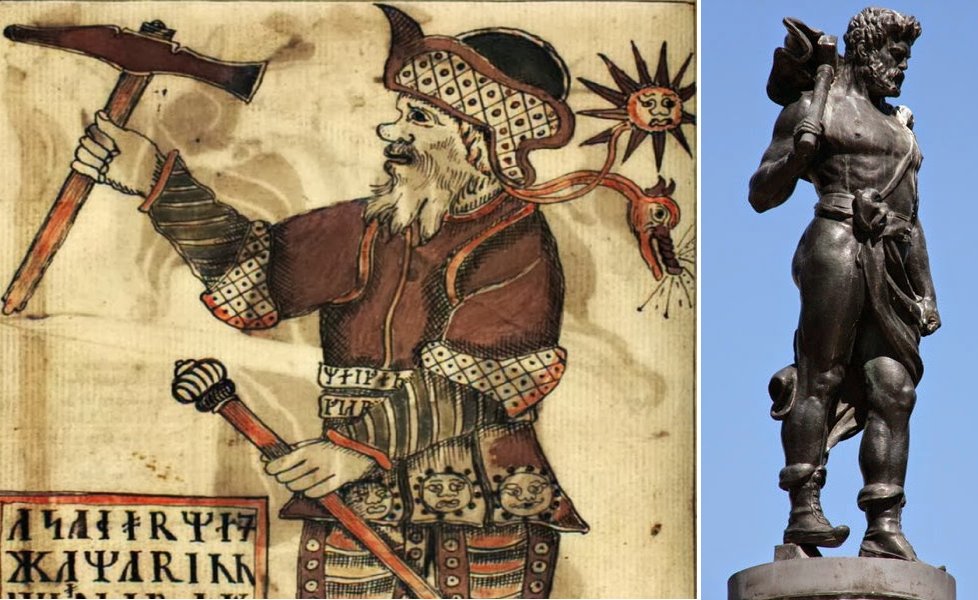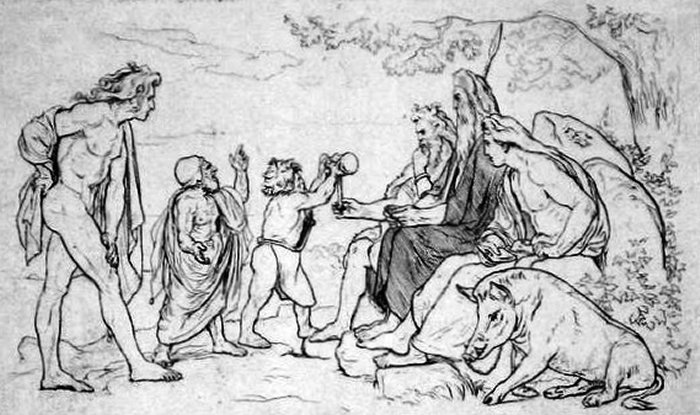Brokkr And Eitri – Norse Dwarves Who Fashioned Magical Artifacts For The Gods
Ellen Lloyd - AncientPages.com - Brokkr and Eitri were Norse dwarves who fashioned magical artifacts for the gods, making them powerful and invincible.
In Norse mythology many stories tell how gods relied on magical weapons and other curious objects to become rich, invisible, shape-shift, conquer the enemy, or strike fear into the hearts of individuals.
Norse dwarves were skilled magicians who produced remarkable objects. Illustration by Credit: Keith Parkinson Image source
Living in the deep and dark forests, the world of the dwarves was utterly different from Asgard, the realm of the Norse gods, but these tiny little creatures were intelligent, skilled, and sometimes very cunning. The dwarves could occasionally be dangerous and a threat to the mighty Norse deities.
The gods and goddesses knew that conflicts with the dwarves could be troublesome.
In the beginning, there was nothing, only an empty void without any existence. It was the Ginnungagap. According to Norse beliefs, Ymir, was a primordial giant whose body parts formed the world. The first dwarves were born from Ymir’s maggots. They resided beneath the Earth’s surface and under the rocks. They were also on better terms with the Jotuns, who were fearful giants living in Jötunheimr, than with the Aesir gods.
Both giants and dwarves were skilled magicians and possessed excellent knowledge.
Brokkr And Eitri Compete Against The Sons Of Ivaldi
Dwarf Brokkr, whose name in Old Norse means the one who works with metal fragments; blacksmith, and his brother Eitri often competed with other dwarfs known as the Sons of Ivaldi.
Snorre Sturlosons tells that on one occasion, God Loki made a bet, saying that the Sons of Ivaldi fashioned much better objects than Brokkr and Etri.
When Brokkr visited Asgard, he accepted the bet and said that he and his brother could produce more powerful magical artifacts than those created by the Sons of Ivaldi.
Left: Drawing of Thor, dated to 18th century, Iceland, Right: Statue of Thor In Stockholm, Sweden
The Sons of Ivaldi had previously made Gungnir, Odin’s magical weapon that never missed its target, and Skidbladnir, a magic ship capable of sailing on the sea, traveling across the land, and flying in the air and always quickly reaching its place of destination.
Brokkr and Eitri had to think. What could they fashion that was more powerful and impressive than the astonishing objects of the Sons of Ivaldi?
Brokkr and his brother Eitri started working. The results of the competition and bet were remarkable. Determined to show that he and his brother could make three equally unique objects, Brokkr created the Draupnir ring, Mjölnir hammer, and Gullinbursti.
All three objects are mentioned in Norse myths.
Gullinborsti (“Golden Bristles”) was the wild boar of god Frey. Capable of running much faster than any horse, it pulled Freyr’s chariot and raced through the air and over the waters day and night by the glow of his golden bristles.
Made in honor of God Odin, Draupnir was a magical ring that could multiply itself. The most impressive of the three objects was Thor’s hammer, Mjölnir. God Thor is depicted in much ancient art with Mjölnir in his hand. The hammer’s only flaw was its short handle. Loki was responsible for the mischief, who disturbed the dwarf working on Thor’s hammer. Loki turned himself into a fly and bit Brokkr’s eyelid, causing it to bleed into the dwarf’s eye. Brokkr stopped working the bellows, and the fire cooled. For this reason, Thor’s famous hammer, Mjölnir, had a short handle.
Nevertheless, Brokkr and Eitri won the contest and the bet. They traveled to Asgard and presented the three objects that the gods judged.
Brokkr and his brother Etri presented their gifts at Asgard.
Thor’s hammer Mjölnir, was so impressive that no one could doubt the skills of the dwarf brothers Brokkr and Ertri. The magical hammer was the most potent treasure, for it could guard the gods against the fearsome giants.
See also: More Myths And Legends
Brokkr claimed that he was the winner of the bet and that Loki owed him his head, but as usual, God Loki used cunning tricks and escaped with nothing worse than sore lips when Brokkr tried to sew up his wicked mouth.
Updated on September 26, 2023
Written by Ellen Lloyd – AncientPages.com
Copyright © AncientPages.com All rights reserved. This material may not be published, broadcast, rewritten or redistributed in whole or part without the express written permission of AncientPages.com
More From Ancient Pages
-
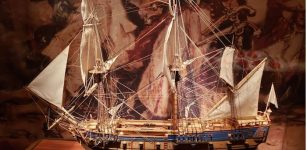 Mystery Of The Coal On The Pirate Shipwreck Queen Anne’s Revenge Solved
Archaeology | Apr 13, 2023
Mystery Of The Coal On The Pirate Shipwreck Queen Anne’s Revenge Solved
Archaeology | Apr 13, 2023 -
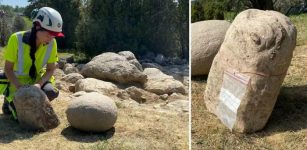 Unusual Discovery Of A Viking Age Phallic Stone In Tystberga, Sweden
Archaeology | Jun 12, 2023
Unusual Discovery Of A Viking Age Phallic Stone In Tystberga, Sweden
Archaeology | Jun 12, 2023 -
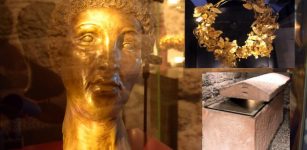 Carian Princess’ Tomb, Golden Artifacts – Now On Display In Renovated Hall Of Bodrum Castle
Artifacts | Aug 27, 2020
Carian Princess’ Tomb, Golden Artifacts – Now On Display In Renovated Hall Of Bodrum Castle
Artifacts | Aug 27, 2020 -
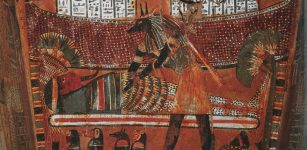 Immortal God Anubis: Lord Of The Sacred Land, Jackal God Of Mummification
Egyptian Mythology | Sep 19, 2016
Immortal God Anubis: Lord Of The Sacred Land, Jackal God Of Mummification
Egyptian Mythology | Sep 19, 2016 -
 Mystery Of Vitrified Scottish Fort Dun Deardail And Ancient Myth Deirdre Of The Sorrows: Is There A Prehistoric Connection?
Civilizations | Feb 5, 2021
Mystery Of Vitrified Scottish Fort Dun Deardail And Ancient Myth Deirdre Of The Sorrows: Is There A Prehistoric Connection?
Civilizations | Feb 5, 2021 -
 Flower Of Life: Ancient Sacred Geometry Symbol And Blueprint Of The Universe
Ancient Symbols | Oct 8, 2017
Flower Of Life: Ancient Sacred Geometry Symbol And Blueprint Of The Universe
Ancient Symbols | Oct 8, 2017 -
 Mysterious Tiny Pre-Viking Gold Foil Figures Baffle Scientists
Archaeology | Nov 5, 2019
Mysterious Tiny Pre-Viking Gold Foil Figures Baffle Scientists
Archaeology | Nov 5, 2019 -
 On This Day In History: Battle Of King’s Mountain Was Fought – On Oct 7, 1780
News | Oct 7, 2016
On This Day In History: Battle Of King’s Mountain Was Fought – On Oct 7, 1780
News | Oct 7, 2016 -
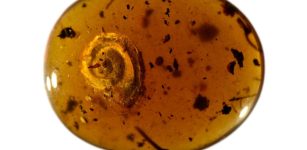 Hairy Snail Discovered In 99-Million-Year-Old Amber
Archaeology | Oct 29, 2022
Hairy Snail Discovered In 99-Million-Year-Old Amber
Archaeology | Oct 29, 2022 -
 Underwater City: Unveiling The Secrets At The Bottom Of Fuxian Lake
Featured Stories | Jun 13, 2015
Underwater City: Unveiling The Secrets At The Bottom Of Fuxian Lake
Featured Stories | Jun 13, 2015 -
 Ymir – Primordial Norse Giant Whose Body Parts Formed The World
Myths & Legends | Apr 5, 2018
Ymir – Primordial Norse Giant Whose Body Parts Formed The World
Myths & Legends | Apr 5, 2018 -
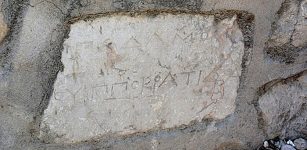 2,300-Year-Old Tablet Found In Mugla, Turkey – Region Of Great Historical Importance In Ancient Times
Archaeology | Jun 5, 2019
2,300-Year-Old Tablet Found In Mugla, Turkey – Region Of Great Historical Importance In Ancient Times
Archaeology | Jun 5, 2019 -
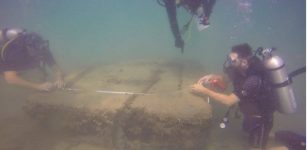 New Unique Ancient Underwater Finds In The Ports Of Caesarea And Acre
Archaeology | Aug 11, 2021
New Unique Ancient Underwater Finds In The Ports Of Caesarea And Acre
Archaeology | Aug 11, 2021 -
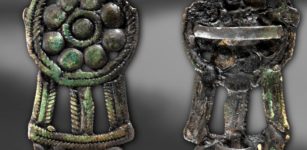 Hunter-Gatherer Metallurgy In The Early Iron Age Of Northern Fennoscandia Was Integrated And Advanced
Archaeology | Aug 15, 2023
Hunter-Gatherer Metallurgy In The Early Iron Age Of Northern Fennoscandia Was Integrated And Advanced
Archaeology | Aug 15, 2023 -
 Controversial Sand Mounds In Australia Are 6,000 Years Old Man-Made Burial Mounds – Radar Scans Reveal
Archaeology | Feb 10, 2018
Controversial Sand Mounds In Australia Are 6,000 Years Old Man-Made Burial Mounds – Radar Scans Reveal
Archaeology | Feb 10, 2018 -
 Inghirami Tomb – Spectacular Etruscan Burial With 53 Alabaster Urns In Ancient City Of Volterra, Italy
Featured Stories | Apr 19, 2021
Inghirami Tomb – Spectacular Etruscan Burial With 53 Alabaster Urns In Ancient City Of Volterra, Italy
Featured Stories | Apr 19, 2021 -
 Our Lives Have Always Been Manipulated By Money – Part 2
Featured Stories | Jun 4, 2022
Our Lives Have Always Been Manipulated By Money – Part 2
Featured Stories | Jun 4, 2022 -
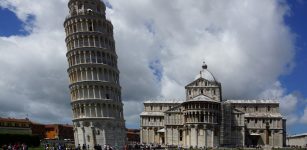 Why Has The Leaning Tower Of Pisa Survived Strong Earthquakes Since The Middle Ages?
Archaeology | May 10, 2018
Why Has The Leaning Tower Of Pisa Survived Strong Earthquakes Since The Middle Ages?
Archaeology | May 10, 2018 -
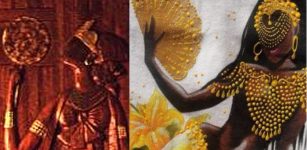 Oshun Goddess Of Yoruba People Who Brings All Things That Make Life Worth Living
African Mythology | Mar 29, 2019
Oshun Goddess Of Yoruba People Who Brings All Things That Make Life Worth Living
African Mythology | Mar 29, 2019 -
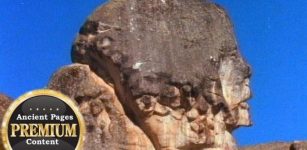 Mysterious Marcahuasi, Peru – One Of The Greatest Puzzles Of Human Prehistory
Featured Stories | Oct 2, 2015
Mysterious Marcahuasi, Peru – One Of The Greatest Puzzles Of Human Prehistory
Featured Stories | Oct 2, 2015


